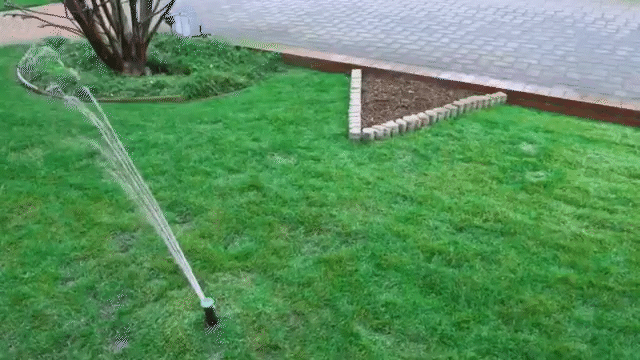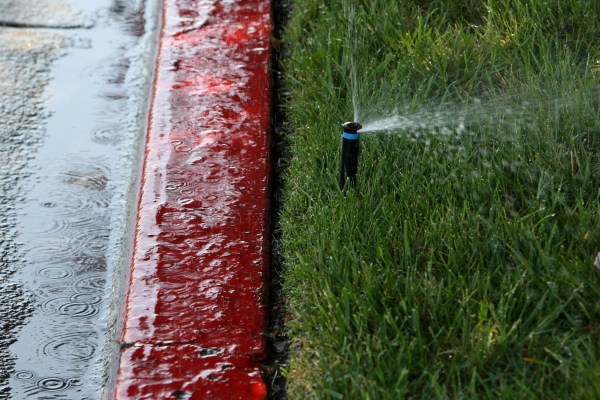Investors just pumped millions into Irrigreen, a startup vying to quench America’s thirsty lawns with “approximately 50% less water.”
Seed investor Ulu led the $15 million funding round. Two tech investors that are focused on water conservation — Burnt Island and Echo River — also chipped in, among a handful of others.
The San Francisco–based sprinkler startup says it maps lawns to drizzle water precisely where lawn-havers want it, without clumsily soaking walkways and passersby.
Irrigreen’s system tasks users with tracing the contours of their yard, and identifying obstacles, such as footpaths and driveways. The tech sounds somewhat like Roomba’s Keep-Out Zones, yet these sprinklers are stationary; instead of wandering the lawn, the startup says its sprinkler heads adjust the stream to send water where you want it.

Image Credit: Irrigreen
Americans are thirsty mfs: The typical family uses around 320 gallons per day, “about 30 percent of which is devoted to outdoor uses,” the EPA says. Water is already scarce, and droughts exacerbated by climate change make water conservation all the more critical. There are lots of ways to conserve water, and outdoor options include planting native ground cover and installing custom irrigation systems.
In other words, internet-connected sprinklers like Irrigreen’s are not the only way to save water. Still, founder Shane Dyer tells TechCrunch that the startup’s system is cheaper than traditional options “for larger yards (those with 7 or more zones).”
Dyer added, “Our hardware costs more, but the labor to install is 1/3 of a traditional system since there is 80% less heads and trenching and piping.” Regardless, if tech is what gets you jazzed about saving water, then by all means give it a go.
TechCrunch has not tested Irrigreen’s sprinklers. The startup pointed us to a Fresno State study it commissioned, which found that its sprinkler heads used around 40% less water by avoiding “overwatering, overspray, and application rate inaccuracy.” Dyer told TechCrunch that Irrigreen also factors in weather, soil, plant types, and shade to “calculate the minimum water needed for healthy plants.” The startup says these additional factors deliver around 50% water and cost savings in all.
Dyer declined to share Irrigreen’s valuation but said the new cash will go toward “developing next generation sprinkler software, creating next generation cloud watering intelligence, and smartphone app control and reporting features.”
Among the coming software updates, Dyer said Irrigreen will be able to adjust the amount of water it sends to different sections of plants via a single sprinkler head. This could come in handy if, for example, you plopped some thirsty flowers beside some drought-tolerant shrubs.
